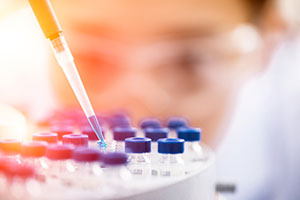 The reaction from parents when they first hear of their child’s diagnosis with Autism Spectrum Disorder (ASD) is nearly universal: their first question is whether or not there is a cure for the disease.
The reaction from parents when they first hear of their child’s diagnosis with Autism Spectrum Disorder (ASD) is nearly universal: their first question is whether or not there is a cure for the disease.
Everyone needs hope and no one likes to deliver disappointing news. Instead of an answer, most of those parents are instead pointed to common treatment options, usually including intensive courses of applied behavior analysis.
ABA Therapy Training
Although it is a common (and the only scientifically-proven) treatment for autism, ABA is not a cure for the disorder. In fact, most professionals believe that there is no cure for ASD.
Some experimental studies, like one published in 2017 covering stem cell transfusion therapy in a small group of ASD patients, show promise. And a 2016 lab experiment on mice showed that blocking production of a particular protein prevented autism-like symptoms from being expressed.
But such research is only exploratory and not definitive. Results take time and for millions of current ASD patients, such exotic treatment will never be an option even if they are proven to be effective.
And some scientists believe that there will never be a single cure for autism, based on the more modern understanding that the disorder represents a constellation of underlying causes, no single one of which is necessarily a definitive cause. Without one cause, there can be no single cure. But the search continues.
The Search For a Cure Rests in Hope and Fear
When people are desperate for answers, someone will always come along to tell them what they want to hear. Unfortunately, those answers usually aren’t the right ones. A cursory search of the internet today will turn up any number of fraudulent cures for autism that make wild, unscientific, and frequently dangerous claims; things like adopting a gluten-free diet… killing off “toxic” gut bacteria… increasing zinc intake… going to entirely organic foods… applying magnets to particular places on the head… prayer… and even spanking.
There is hope, however, but it comes from aspects of the disorder that remain mysterious and fundamentally outside our control.
Recently, research has been piling up that some autistic children effectively grow out of the disorder as they age. A 2015 study of 569 children living in the Bronx, New York, found that approximately 7 percent whose symptoms were resolved to a point where an ASD diagnosis was no longer appropriate.
Of course, some of the explanation for this apparent phenomena is simply the difficulty of diagnosing autism in very young children in the first place. Some percentage of those diagnoses will be false positives, indicating that otherwise neurotypical kids are autistic simply because their behavior is a little unusual.
But surveys of parents have shown that this is likely only the case in about 75 percent of remissions. And a 2013 study expressly looking at this group showed that the possibility of genuine remission is real.
It’s not all smooth sailing even for this tiny group whose ASD symptoms self-resolve, however. The original issues they experience with communication and social disability can leave them with cognitive and behavioral problems that last well beyond the course of the disorder. Of the 38 patients in the Bronx study who lost their ASD diagnosis, only 3 were found to no longer have any symptoms; 92 percent had residual learning or behavioral problems from delayed development.
Looking For a Cure Overshadows Genuine Treatment
It’s possible that the search for a cure also overlooks good news on the treatment front that is nonetheless short of a full resolution. Over time, about 10 percent of ASD patient will show dramatic improvement by their mid-teens. Although still formally diagnosed with ASD, they are able to improve their verbal and daily living skills considerably.
It’s unclear if the Bronx study, or others that have found similar cases of apparently spontaneous resolution to ASD symptoms, hold any clues to developing a directed cure to the disease. So far, no particular patterns have emerged that might show a particular demographic range or treatment technique leading to resolution.
Among the population that improves, however, there is at least some suggestion that responsive therapies lead to better outcomes than directive therapies. ABA techniques such as pivotal response training and other naturalistic approaches fall into this category.
A 1987 paper suggests that the relative success of these models has a lot to do with easing those with ASD into social interactions in such a way that it eliminates the stressors often associated with social contact – meeting new people represents a break in pattern and routine and often requires the kind of social sensitivity that those with ASD struggle with. By gradually introducing social skills slowly and in settings where the patient was comfortable, ABAs can eventually reverse adverse behaviors.
Applied Behavior Analysis Therapist
Although it is not, in and of itself, a cure for autism, applied behavior analysis is at least a valuable step along the path to a cure for at least some ASD patients. For the rest, ABA can at least lead to improvements in quality of life and individual skills while the search for a real cure continues.





